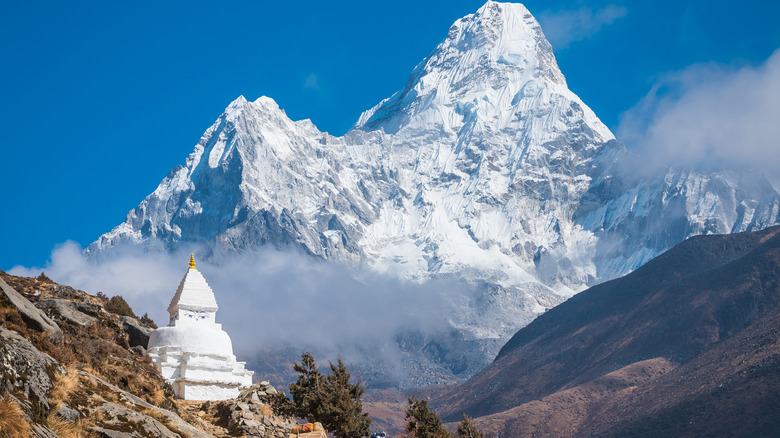The natural wonders of Sagarmatha National Park
Sagarmatha National Park is in the Solu-Khumbu region and covers 1,148 sq km. As expected, the terrain is rugged. With more visitors coming to the area, the park has been forced to upgrade existing structures — and the area’s natural ecology has been negatively impacted as a result. Various agencies work with local Nepalese people — including village elders and head lamas — to preserve the park as much as possible. While Everest is the most famous mountain in the park, other towering peaks include Amadablam, Cho Oyu, and Nuptse. Notable monasteries such as Thame and Tengboche are also present. In addition to the snow leopard and red panda, the area is home to over 100 bird species, including the blood pheasant and the snow cock.
Scaling Mount Everest requires extensive training and preparation. At time of posting, only 4,000 people have managed to reach the top, and only 200 have done so without supplemental oxygen. If the mighty mountain is on your bucket list, expect to shell out $15,000 for the permit plus tens of thousands more for gear and a guide, as it can be fatal for inexperienced climbers. Then there’s the time you’ll need to take off work; it takes about two months to complete the expedition. For those willing to brave the massive physical and financial investment, the view from the top is otherworldly.

